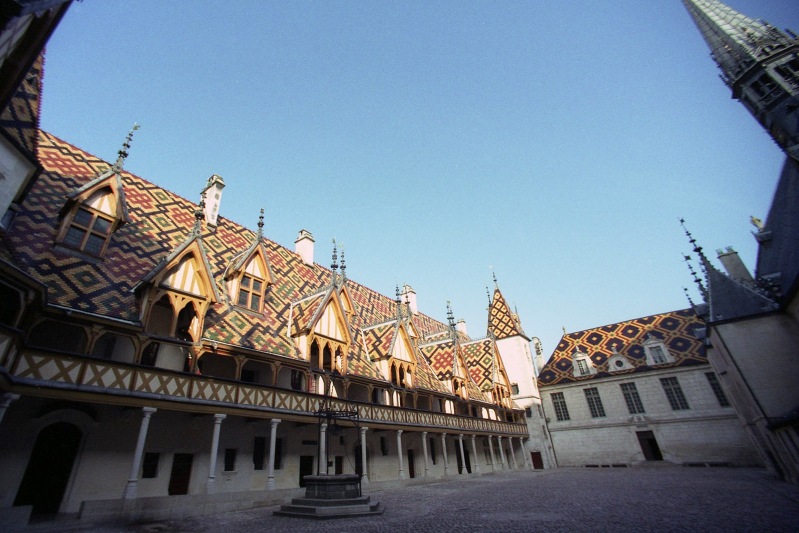In 1992, I visited Lyons to talk some math. On the way back home I wanted to explore Burgundy, and asked for advice. I was sent to Emmanuel Giroux, who grew up in Burgundy, and is blind. My mastery of the french language was never satisfactory, but I understood that I had to see the hospital in Beaune. Here it is, l’Hôtel-Dieu de Beaune:

I walked around, admired the roof tiles, appreciated it as an early example of a real hospital, but didn’t quite understand why this was most essential, until, on my second walk through the halls, I noticed stairs leading downstairs into darkness.

Nothing could have possibly prepared me for Rogier van der Weyden’s enormous triptych with a Last Judgment from about 1450. There is of course the usual awakening and suffering, but above all, there is the hypnotic stare of archangel Michael.

(That I post this image here is an exception; I usually only post my own. Thanks to Wikipedia France, this one is in the public domain.)
Could it be that the artists had finally realized that cause and effect were exchanged in their famous Last Judgments:
The imagined atrocities they depicted were not distant punishments for a life wasted in sin and inflicted by a superior power, as suggested by Gislebertus’ nighmarish version from the 12th century in the nearby Cathedral of Saint Lazare at Autun.

Michael’s intense presence tells us that all this is happening right now and here: it is us who are committing those atrocities ourselves, and the weighing of our corrupted souls has always been under way.
It might well be that the human race can’t exist without sin. Gislebertus knew that we have choices, though. The first European nude since the Fall of Rome must have raised some eyebrows.

So nice to see that someone has visited Beaune. It’s now so known but it is a beautiful town and has good food.
Enjoy!!!
LikeLike